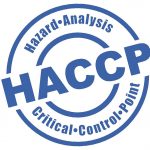Over the last two decades I have had the utmost privilege to work with food manufacturers from every sector. From dried goods, meats, poultry, school lunches programs, etcetera. I have seen almost everything. The leading trend I have seen over the last 20 years is the steady rise of beverage companies. Everyone likes a different type of beverage: Water, juice, cold coffee, teas, energy drinks, kombucha… the list goes on. The two most important things a small company entering the market needs to remember is to make sure that first, you can comply with the regulators, and second, that the people you are selling your products to also understand their market (buyers and retailers).
The marketplace loves new and innovative products. We need, as an industry, to continue to support innovation in the beverage industry. Healthcare trends, nutraceuticals, supplements, and “fresh” are some of the many things consumers are looking for in a product. We often have questions such as, “I have the perfect recipe for a new beverage product—how do we get it out into the market?” The first question to ask yourself is: Do you understand your product and its intended use? And, second: Do you understand how the physical properties of this product impact how it will need to be transported as well as stored and used by the final consumer? Both of these questions come back to—and can be answered by—food safety. Companies can have the greatest product ideas; however, if you do not have the ability to make sure it has a safety factor during transportation, as well as the ability to communicate your food safety plan, an entrepreneur can jeopardize the future of their company before it is even allowed to begin.
I have used the analogy that food safety best practices are like a sport—the more you train, practice and focus on the “basics done well,” the better your plan will be on a day-to-day basis. Bottom line: The focus is making the food supply safer. Please take note the transition to new practices does not mean that an existing HACCP plan (Hazard Analysis and Critical Control Points) is invalid! As a matter of fact, HACCP and Good Manufacturing Practices (GMP’s) should be looked at as the foundation of FSMA’s Preventive Controls for Human Food. Local departments of public health still rely on HACCP as their main line of defense for the food safety industry. We have seen so many small processors and restaurants that have inspections where HACCP is still the focus, even though Preventive Controls has some more advanced techniques for protection. Both HACCP and Preventive Controls focus on making sure you have good sanitation practices, employee training, and have done a hazard analysis for biological, chemical and physical hazards. I believe the lines are blurring a bit—companies, academics and regulators don’t often understand the differences between the two and, to be honest, the differences are not that substantial from a fundamental level. Ultimately, companies are responsible for their own food safety best practices.
As we trend toward new and innovative beverage concepts, we need to be partners with both our regulators and our customers. There is so much information across the United States and companies that are in emerging markets will only grow and develop if they have proper food safety plans as a foundation. Emerging companies should get connected early and learn from other companies and organizations, and become more proactively involved in the food safety element of their product.
I believe 2019 will be an incredible year for the rise of food and beverage startups. We have already seen much growth in the knowledge of food supply due to easily accessible information about products. Keeping a transparent conversation with regulatory personnel and customers is key to the success of any food or beverage company.







